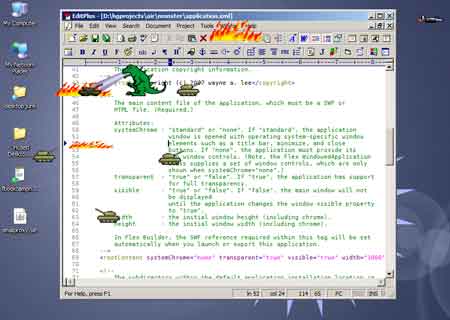I’m experiencing a strange problem: when running an Adobe AIR app, the Flash debug player trace() log stops updating!
The details: I’ve followed the steps in this article so that I can read the output of trace() while running Flash movies in the browser. I use cygwin and the tail command to view the log updating in real time (I’m running Windows XP SP2 Home).
Now, I’ve noticed that whenever a new instance of the Flash player loads, it clears the flashlog.txt file. The tail command reports this as “tail: flashlog.txt: file truncated“. This happens when, say, I reload a Flash movie in IE and then in Firefox. But in both cases, logging of trace() continues after the file is cleared.
However, whenever I launch an AIR app (for example, the excellent tweetr or kuler apps), not only does the log file truncate (as I would expect), but the flashlog.txt file stops updating, no matter what trace() commands execute in my browser movies. The file stays at zero length for as long as the AIR app is running. When I quit the AIR app, trace() commands resume logging to flashlog.txt.
It’s quite odd. Note that I am not the author of these (or any) AIR apps, so I do not know if those apps are using trace() at all. Perhaps it’s just a case of AIR locking flashlog.txt and not letting go until the app(s) are closed?
The upshot is that I have to close any AIR apps before following any trace() logs. A small inconvenience, but it took me a while to figure out :P
 Well that was easy!
Well that was easy!

 I was excited to see
I was excited to see